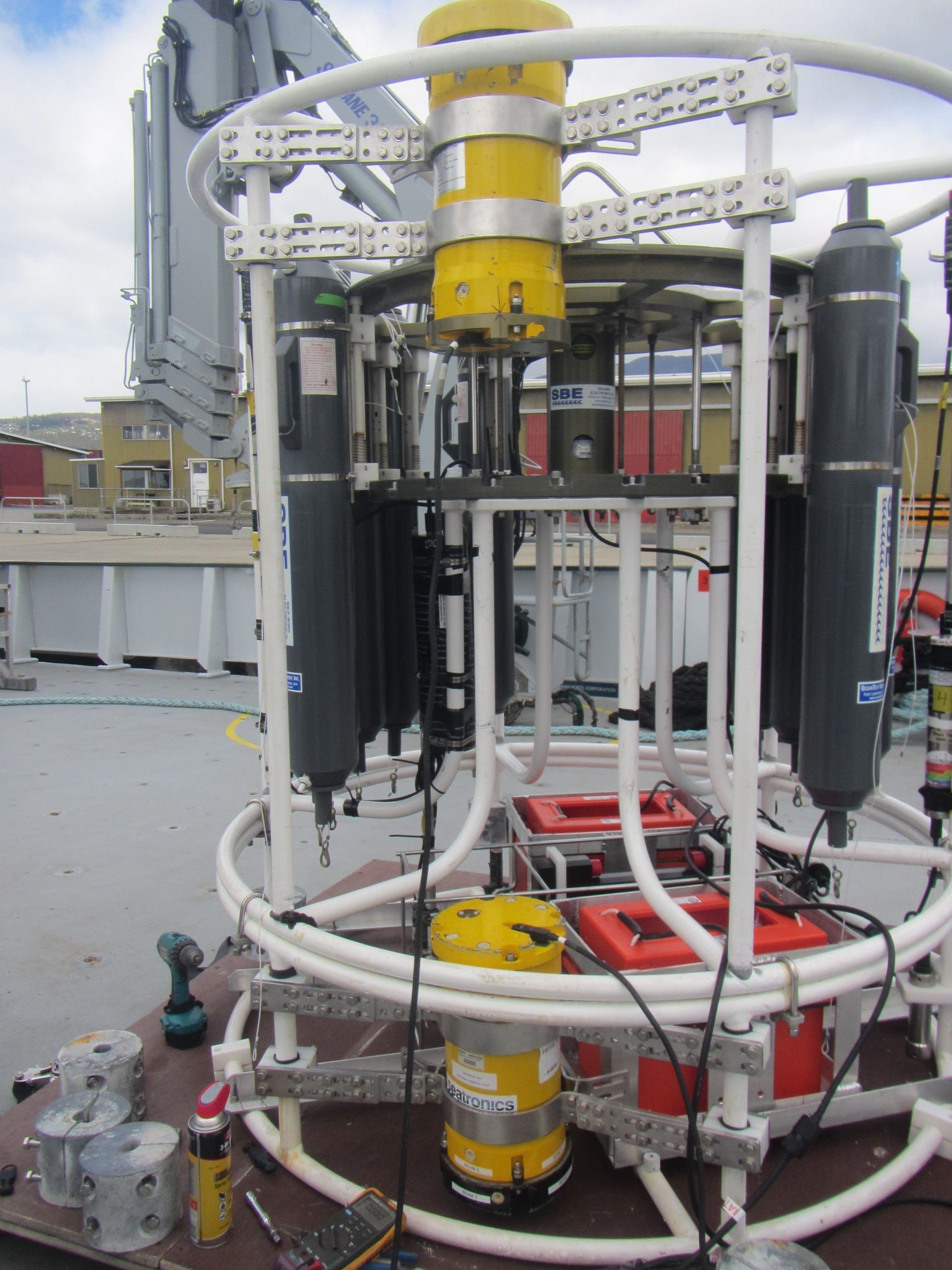Yesterday found me standing on the aft deck of Falkor, gripping a rope to hold the swinging CTD rosette steady as we lowered it over the side and into the ocean. The rogue wave that crashed across the deck managed to soak my work boots and my jeans up to the knee. Even in fairly good weather, ocean fieldwork is … Read More
Falkor: CTDs Away!
Our first day of sailing consisted of voyage preparation. This included tying everything down and expecting the worst sea conditions. Pete and I managed to get the wet lab set up for the experiments that we will be conducting. We are trying to find out how the biology in the Tasman Sea is affected by the internal waves through … Read More
Falkor: Calibration Celebration
Good scientific data is wonderful, but data is not very useful if it isn’t accurate. The tricky bit about using the ADCP on this cruise is that it will be attached to the CTD rosette. This is called a “Lowered” ADCP or LADCP. The CTD carries batteries on it that have metals and electrical currents that can interfere with the … Read More
Revelle: A Mooring Milestone
We hit a huge milestone on Monday: we dropped mooring number 15, the last of our planned long-term moorings, as the sun set over the Tasmanian Landscape. All of the ingredients of the moorings—40 oversized spools of cable, 15 giant orange buoys, 50 thousand pounds of anchors, clusters of spherical glass balls enclosed in oversized yellow “hard hats,” and hundreds … Read More
Catching the Wave!
A very big part of this project depends on a piece of equipment called the ADCP (acoustic Doppler current profiler). This is one of the instruments that will help the scientists to find the location and breadth (the “beam”) of the Tasman Sea internal tide. To do that, they need to identify the difference in the speed of the water … Read More
More Q & A
Ms. Pfaff’s 6th grade Earth science class (period 3) asks, “Why are internal waves so important, that you decided to research them?” Internal waves are important from two perspectives. First, they have the ability to distribute ocean energy from lunar tides to various parts of the ocean. Energy (both heat and turbulence) is moved around the ocean by either tides … Read More
Revelle: More Moorings, Sun and Some Fish
We took advantage of a sunny, temperate weather window on Sunday to deploy moorings T1 and T3. We loaded each of the moorings with 36 temperature sensors, which spanned half a kilometer of line, and three CTD’s, instruments that use a band of sensors to measure the water’s conductivity, temperature and density. For each of the moorings we’ve deployed so … Read More
Greetings from the RV Falkor
The second leg of the TTIDE cruises is set to take off from Hobart on the RV Falkor. We have been busily prepping our instruments, eager to get underway. A two-day delay in port, due to an electrical backup system that needs repairing, has given us a good amount of time to prepare for the big seas and big science … Read More
Revelle Progress Update: Storms and An Aborted Mooring Deployment
We’re currently hovering close to the northern site as we prepare to deploy moorings T1 and T3. A perfect storm (dare I say it) of high winds and choppy waters forced us to abort Friday’s deployment shortly after we threw the upper float of mooring T1 over the side. The wind was howling at 36 knots at the start, and … Read More
Revelle: What is a mooring?
The focus of our cruise so far has been on deploying moorings, the backbone of this data-collecting mission. At their simplest, moorings keep boats, ships or buoys anchored to a single spot. The moorings we are using here, called subsurface moorings, are anchoring long, vertical stretches of line, sometimes several miles long, to the ocean floor. The top end of … Read More

